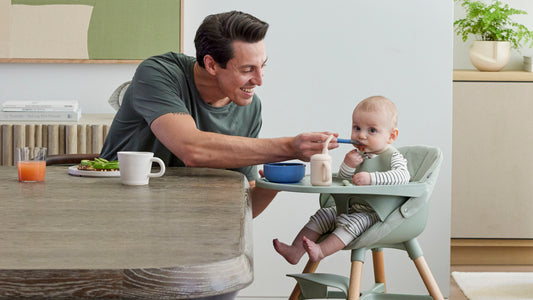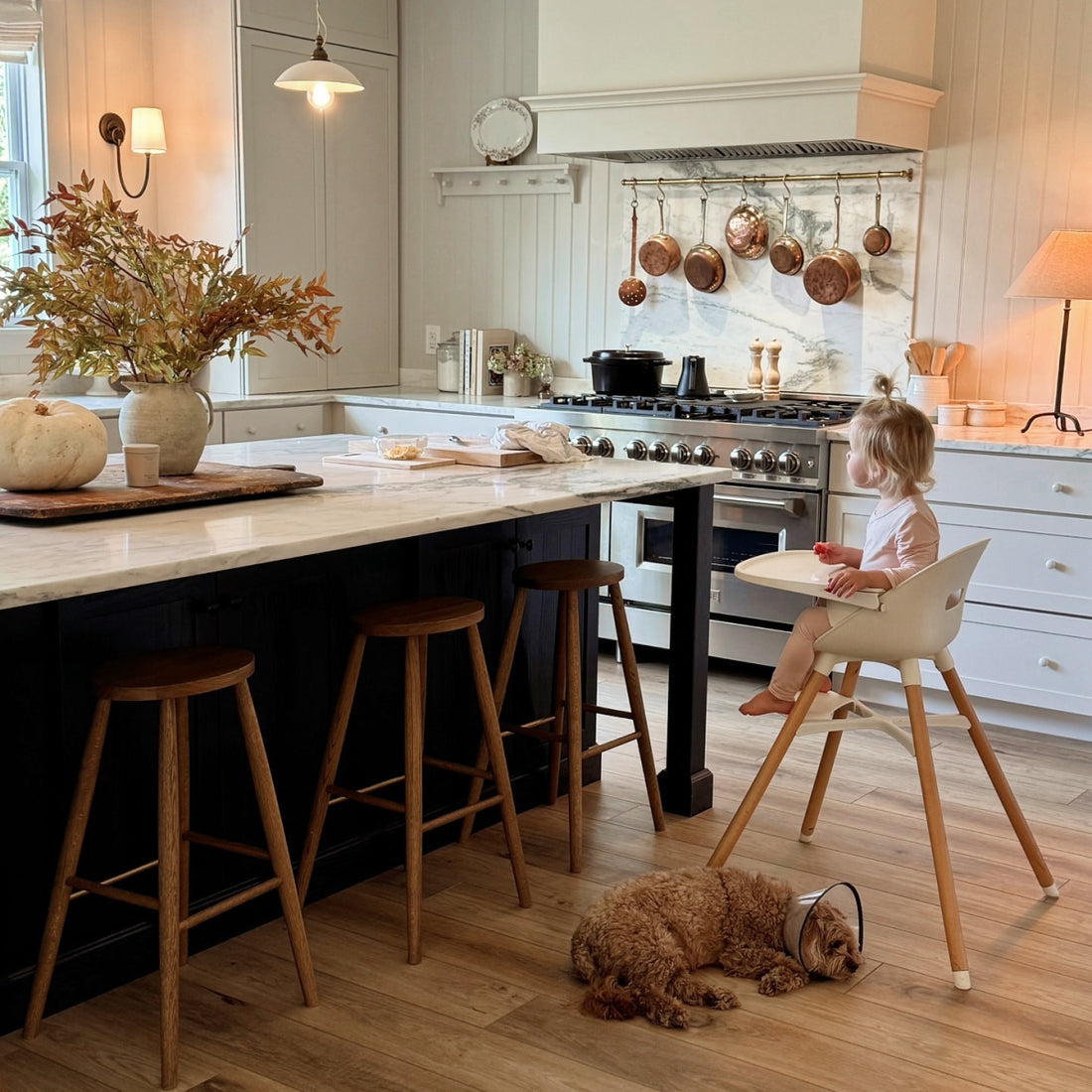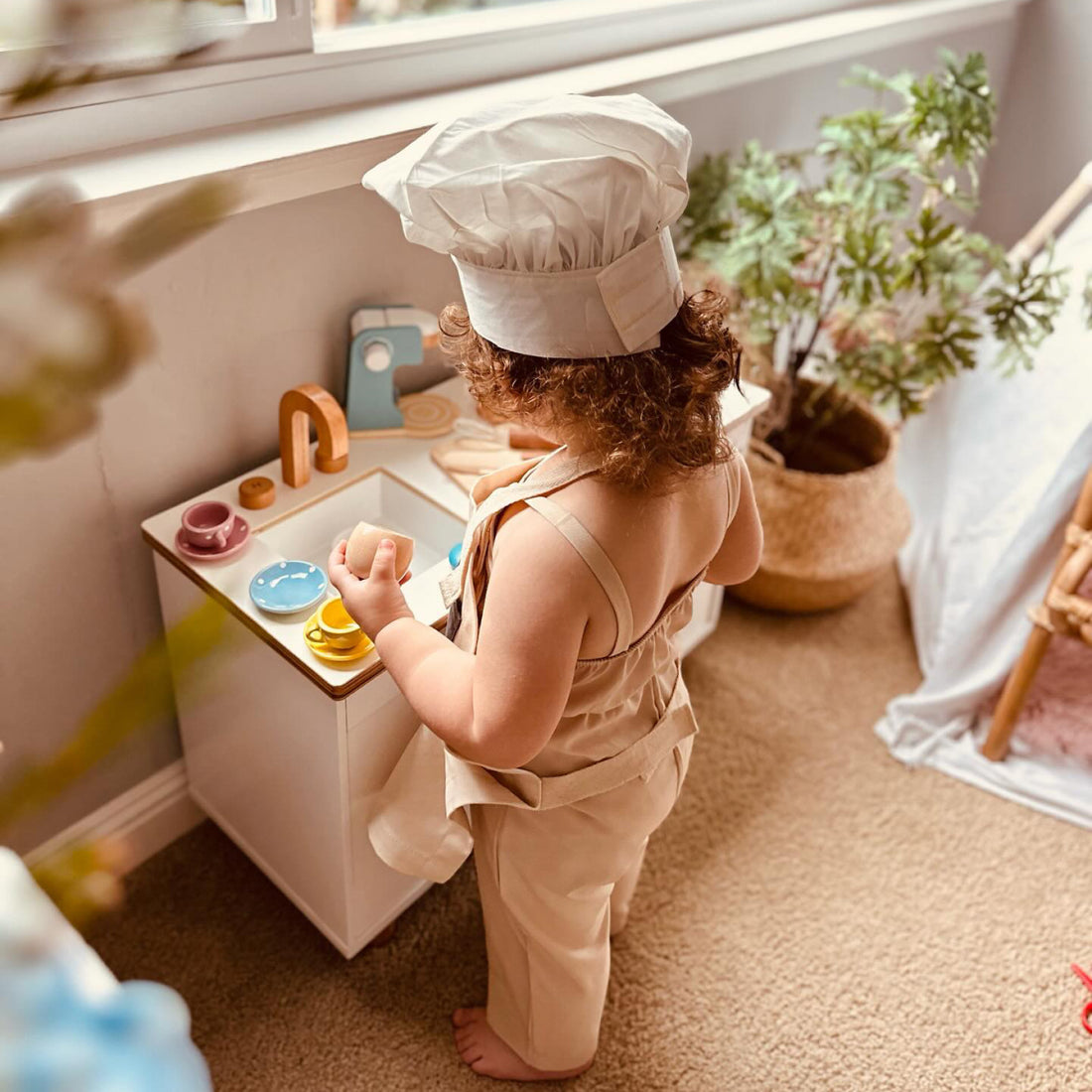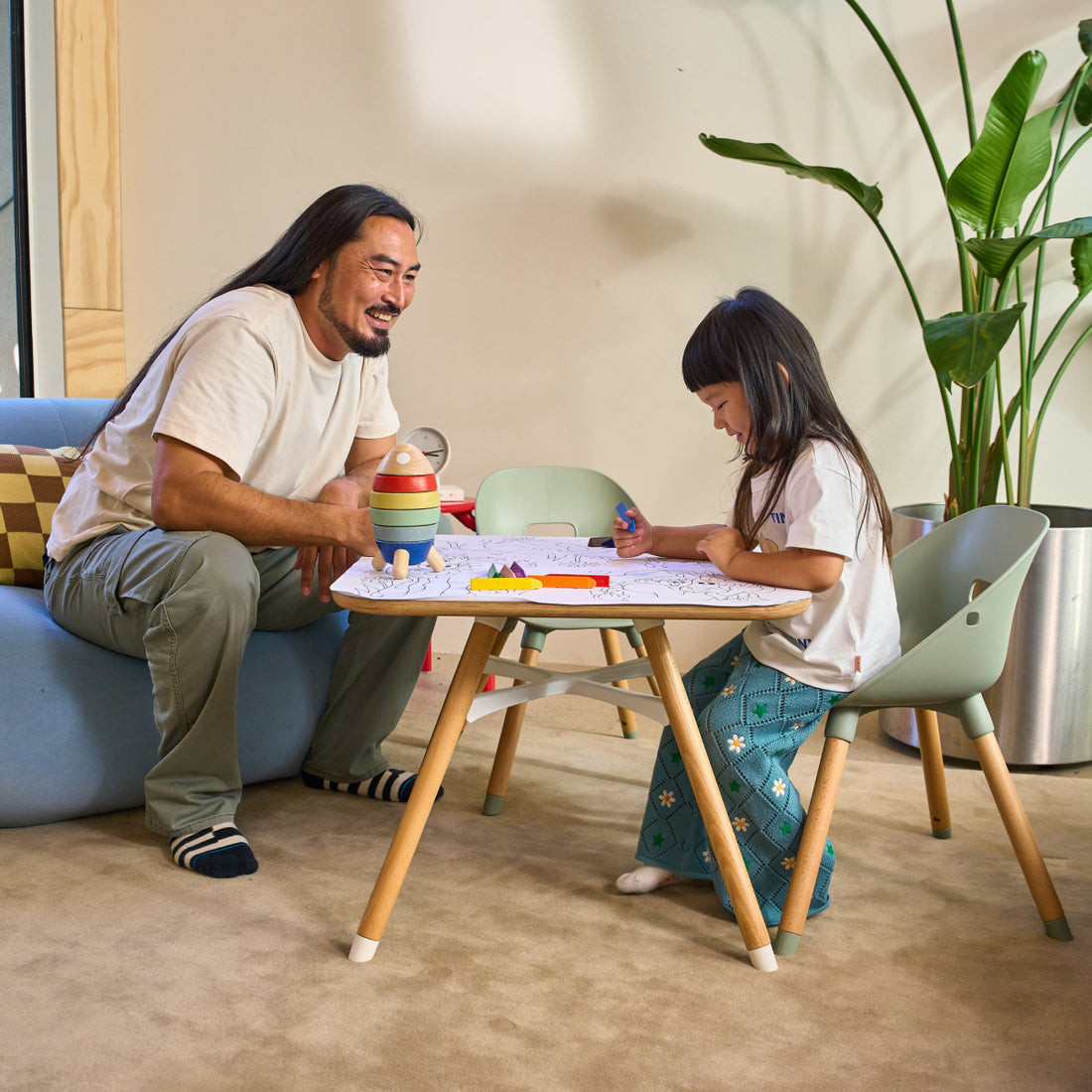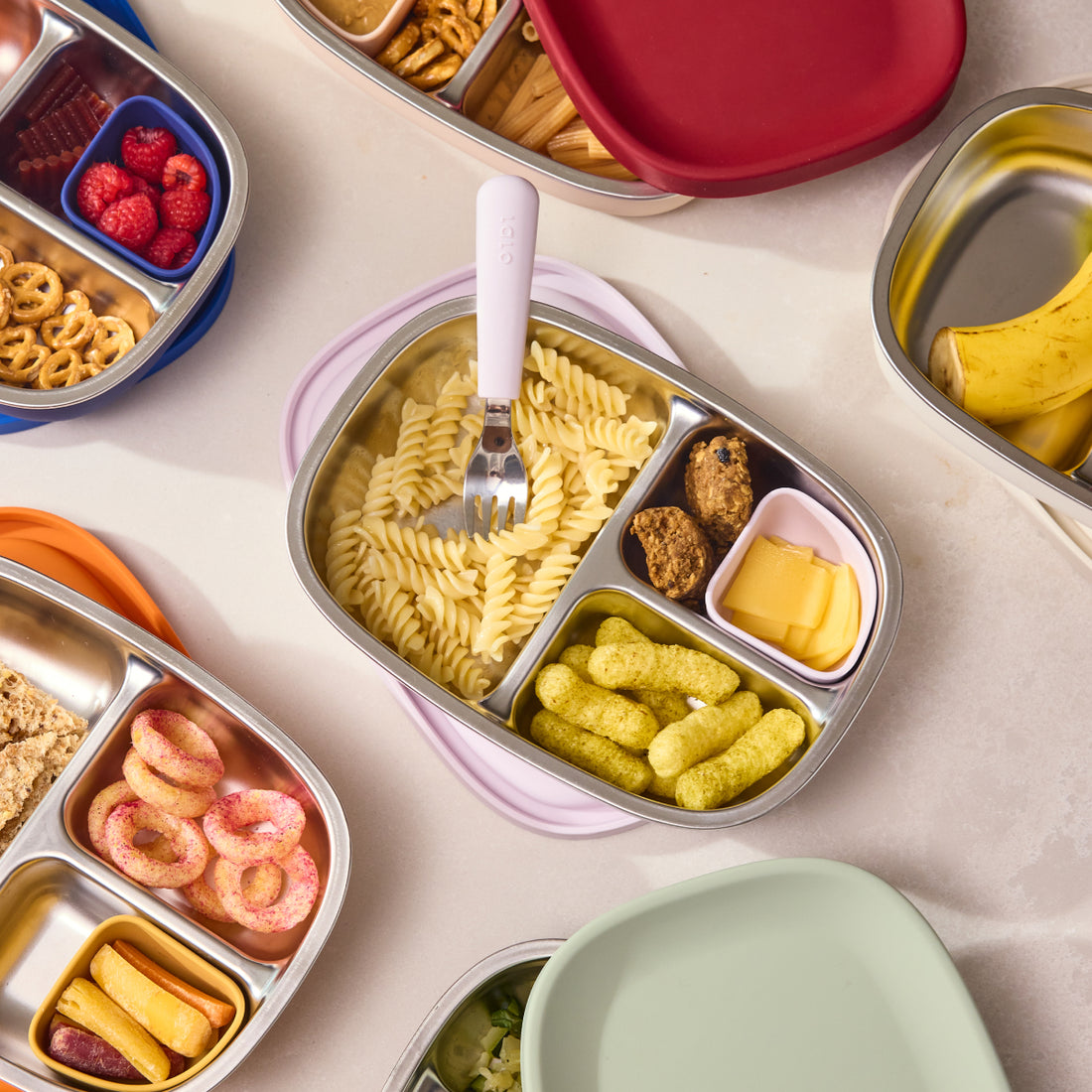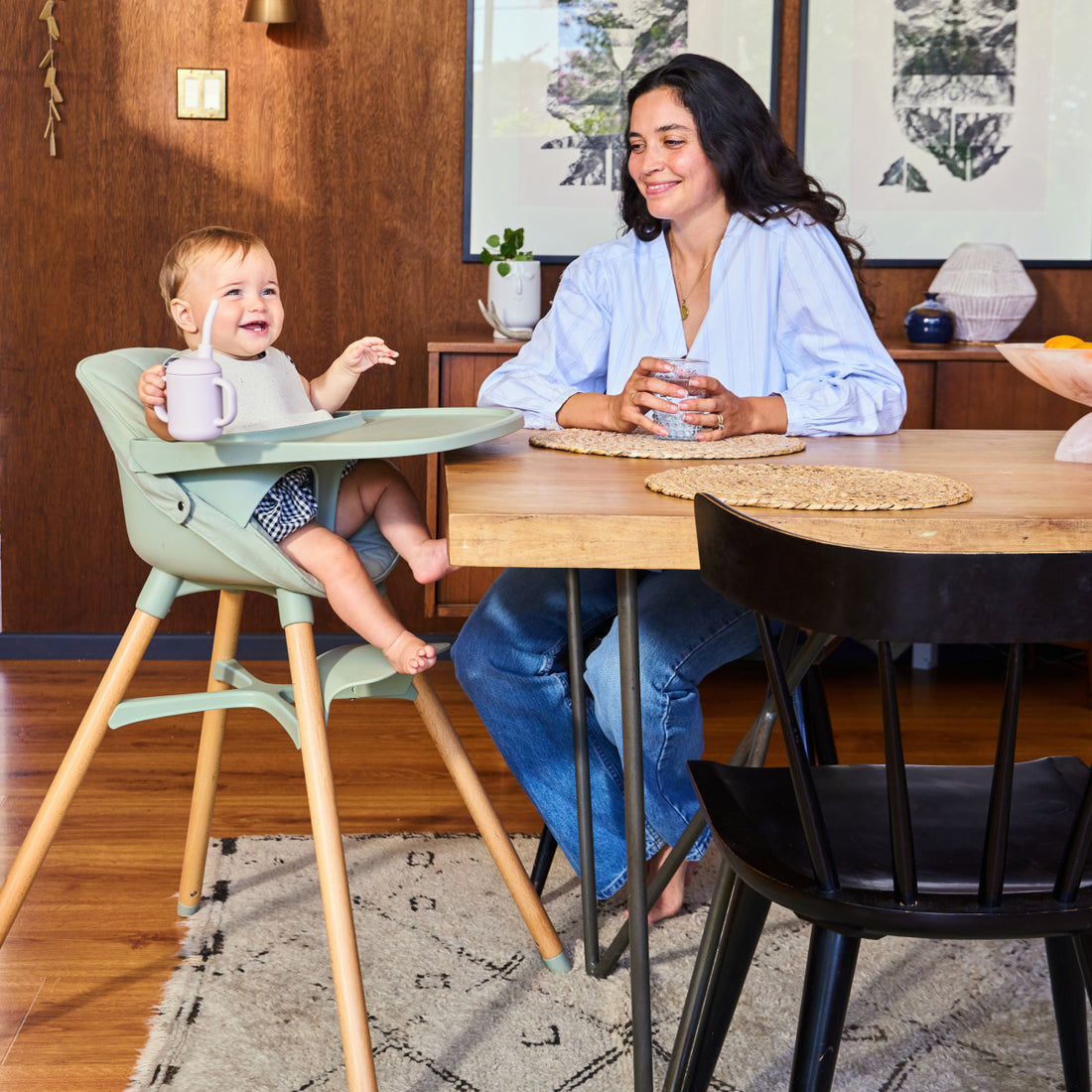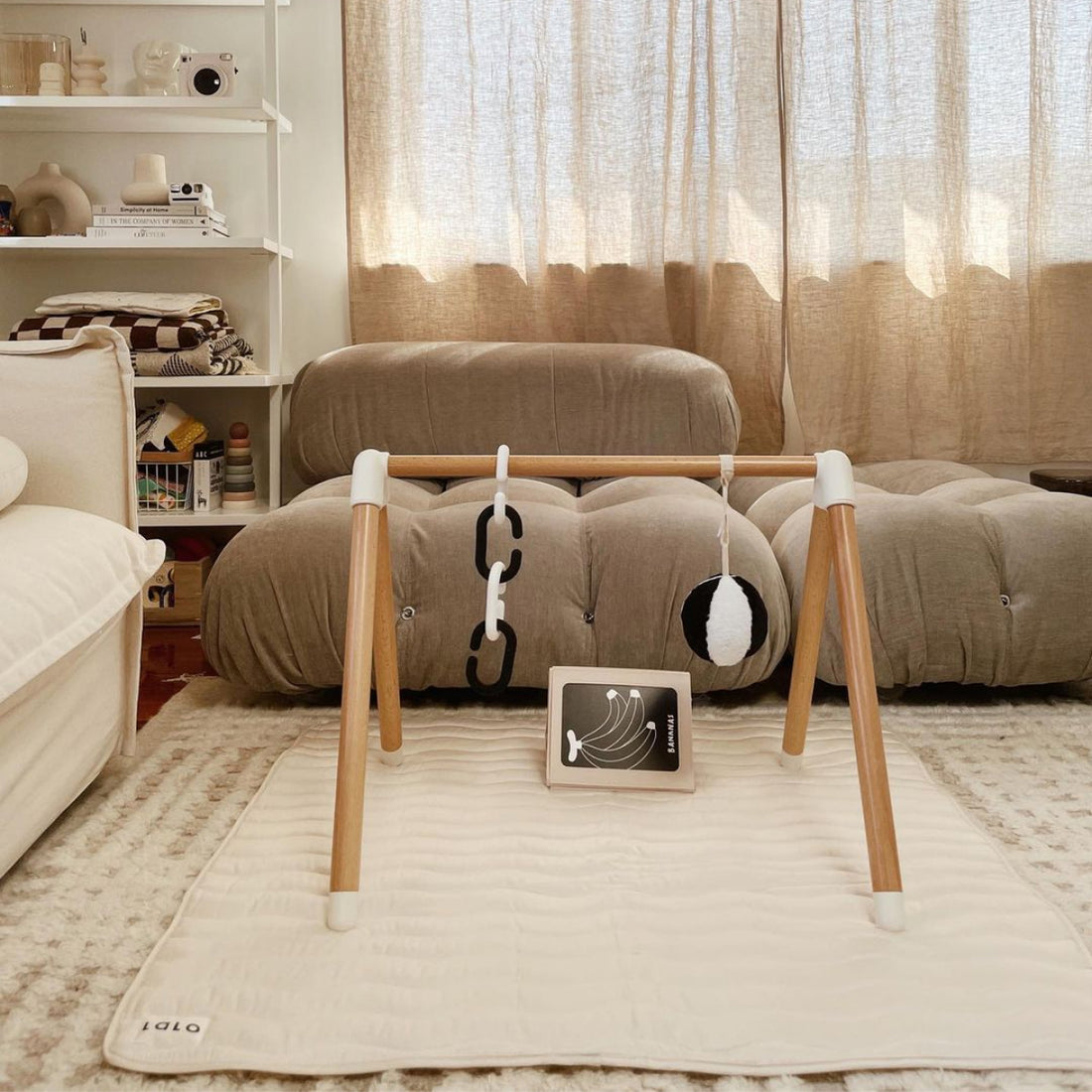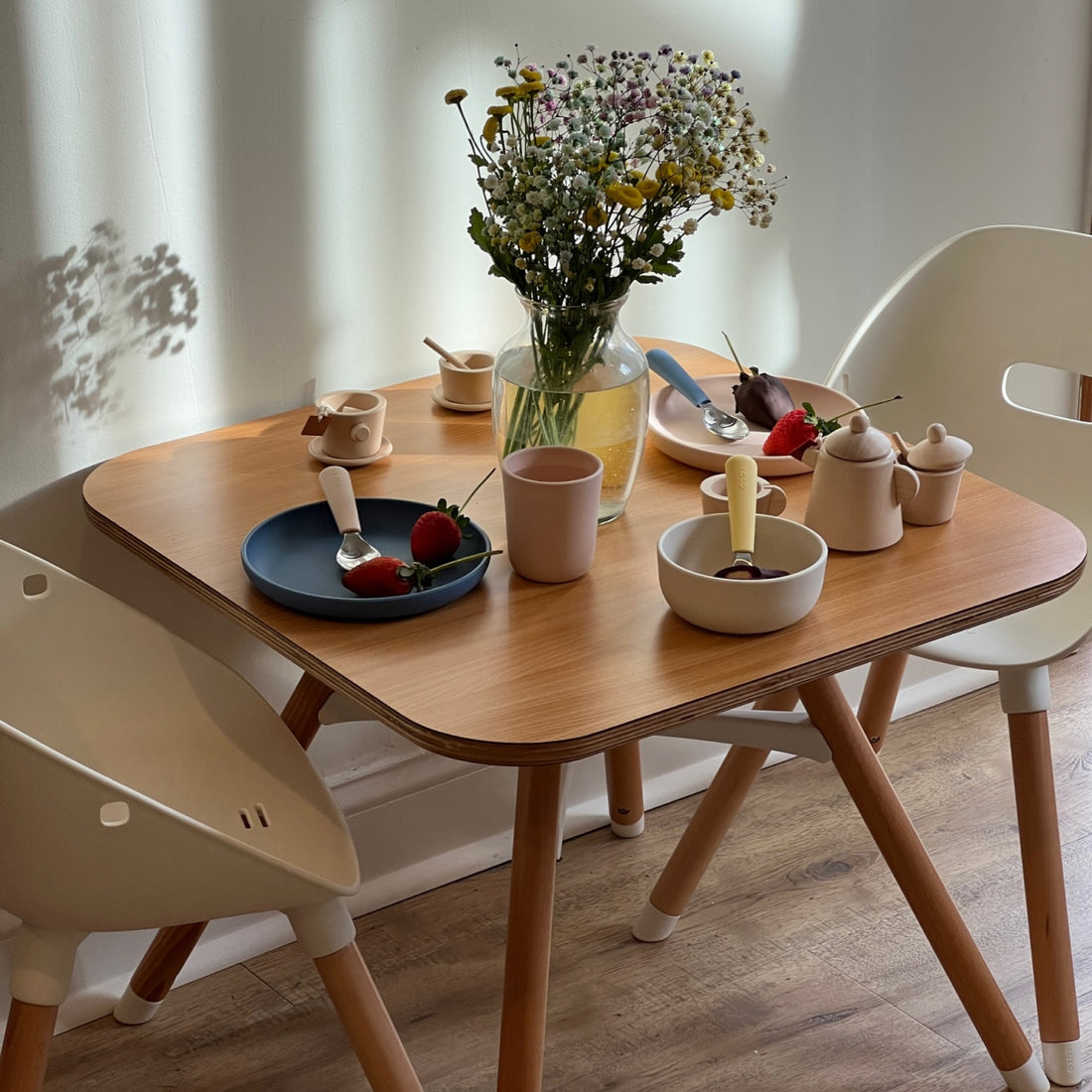By Catherine Callahan, MS, CCC-SLP, CLC
Ready to explore solids?
Are you getting ready to start solids with your baby, but feeling overwhelmed? We all want our babies to become successful eaters one day, little foodies we can share a family meal with or take out to our favorite restaurant, but how do we get there?
Feeding your baby can feel overwhelming, but we are here to help! Here you’ll learn simple strategies to get started on the right foot. Small changes you can implement at home to take the pressure off and make a lasting impact.
Five tips for starting solids:
1. Start with a strong foundation.
Before starting solids, ensure that your baby is truly ready. While your little one may be nearing 6 months, that doesn’t mean he or she is 100% ready.
First, check your baby’s stability. Can your baby sit upright unassisted for a few minutes? (building neck strength with a Play Gym helps babies gain more stability!) Is your baby holding his or her head upright independently? Is your baby bringing hands, toys, and utensils to his or her mouth?
Stability and mouthing are key to successful eating. If foods are introduced too early, your baby may have difficulty, and this can lead to later feeding challenges. When timing is right, your baby will have a good foundation to learn and practice those first feeding skills.
2. Be prepared.
Being prepared means having both the knowledge and the tools to start. Do your research. Do you plan to use puree feeding, baby led weaning, or a combination of the two? Having a plan going in allows you the confidence to proceed. Take an infant and child CPR class. Learn the difference between gagging and choking. It’s important that you feel safe so your baby has space to grow.
Around 4 months, prepare your tools. Make sure you have a high chair, bibs, spoons, cup and straw, plate and bowl. The Lalo Chair and First Bites Kit are the perfect tools for starting solids. The Lalo Chair is supportive, easy to clean, and beautifully designed. The Lalo bibs, plate, bowl, spoons, and cup with straw are all designed to fit your little one’s needs and promote feeding success. Made from soft, non-toxic, food-based silicone, these products are safe and soft for little mouths.
Around 5 months, if your baby is able to hold his or her head upright and sit with little support, begin practice in their high chair. Have your baby sit in the high chair next to you at mealtime. Give your little one the Lalo Spoon and Cup to practice hand to mouth movement and exploration. Around 6 months, when your baby is developmentally ready, plan to begin.

3. Eat with your baby.
Babies learn through imitation. When you eat alongside your baby, he or she is exposed to a wider variety of foods. While watching you eat, your baby is learning that those foods are safe to pick up, bring to mouth, and eat. Watching you, your little one is learning how to bite and chew. On top of all of this, sharing a meal offers a nice bonding experience for baby and family.
Sit down together, be present with your baby, take a deep breath and enjoy this time. Even just 10 to 15 minutes once or twice a day can make a big difference in the long term. When your baby enjoys this time, you’ll build positive memories and your baby will learn to love eating.

4. Focus on variety.
Exposure to a wide variety of foods before age one is key to long term feeding success. Baby’s first year is a critical period for learning and experiencing food tastes and textures. Multiple studies suggest that earlier introduction of a variety of foods leads to better eating and a more balanced diet in childhood. Texture variety is also important. Research shows that late introduction of lumpy foods can lead to feeding difficulties later in life.
It’s important to expose your baby to a wide variety of foods and textures during your baby's first year. Plan to serve new foods to your baby regularly. Make it simple by using foods you enjoy eating. Cook these foods longer to soften them for your baby, cut them into stick shaped pieces, blend them into a puree, and/or mash them with a fork to suit your baby’s needs. If you decide to start with smooth pureed foods, make sure to begin increasing the texture and changing the flavor early on, well before 9 months. Babies are often ready to move from smooth to thick or lumpier puree after just a few weeks.
5. Be responsive to baby's cues.
Your goal as a parent, grandparent, or caregiver is to teach your baby that eating is nourishing and feels good. If you watch your baby’s subtle cues, listen to your baby, and feed him or her with the right timing and pace, he or she will enjoy the experience, remember it, and come back for more. If your baby is unhappy, too full, having difficulty, or tired of sitting in the high chair, and you are pushing him or her to eat more, it can become a negative experience.
While feeding your baby, watch for your baby to: look at you or the food, lean in toward you and the food, open his or her mouth, reach for the food or utensil with hands, smile, and laugh. If you see your baby turning away, pushing food away with hands, closing lips, looking away from you or the food, crying, or whining, remind yourself that baby doesn’t want this right now, and it’s important to stop. Listening to your baby’s cues and feeding your baby when he or she wants to eat, is the best way to find long term success.
Meet the expert

Catherine is a speech-language pathologist, pediatric feeding therapist, and certified lactation counselor with over 15 years of experience working with infants and children in a medical setting. She resides in Chicago, where she works at the Ann & Robert H. Lurie Children’s Hospital and owns her own business, ChiKids Speech & Feeding, LLC.
Through her social media and blog, Catherine shares everyday feeding strategies and supports families and professionals across the globe.

